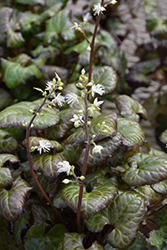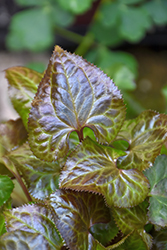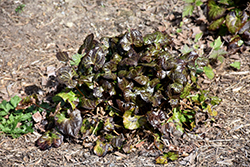Plant Height: 12 inches
Flower Height: 32 inches
Spread: 12 inches
Sunlight:
![]()
![]()
Hardiness Zone: 5
Description:
An outstanding foliage plant for the moist shade garden; very impressive as a mass planting, or as a single accent; foliage displays wonderful blueish-purple tones in fall and winter
Ornamental Features
Beesia features showy spikes of fragrant white flowers rising above the foliage in mid summer. Its attractive glossy heart-shaped leaves emerge green in spring, turning dark green in color. As an added bonus, the foliage turns a gorgeous plum purple in the fall.
Landscape Attributes
Beesia is a dense herbaceous evergreen perennial with a mounded form. Its wonderfully bold, coarse texture can be very effective in a balanced garden composition.
This is a relatively low maintenance plant, and is best cleaned up in early spring before it resumes active growth for the season. It has no significant negative characteristics.
Beesia is recommended for the following landscape applications;
- Groundcover
Planting & Growing
Beesia will grow to be about 12 inches tall at maturity extending to 32 inches tall with the flowers, with a spread of 12 inches. Its foliage tends to remain dense right to the ground, not requiring facer plants in front. It grows at a slow rate, and under ideal conditions can be expected to live for approximately 10 years. As an evegreen perennial, this plant will typically keep its form and foliage year-round.
This plant does best in partial shade to shade. It requires an evenly moist well-drained soil for optimal growth, but will die in standing water. It is not particular as to soil pH, but grows best in rich soils. It is somewhat tolerant of urban pollution. This species is not originally from North America. It can be propagated by division.


